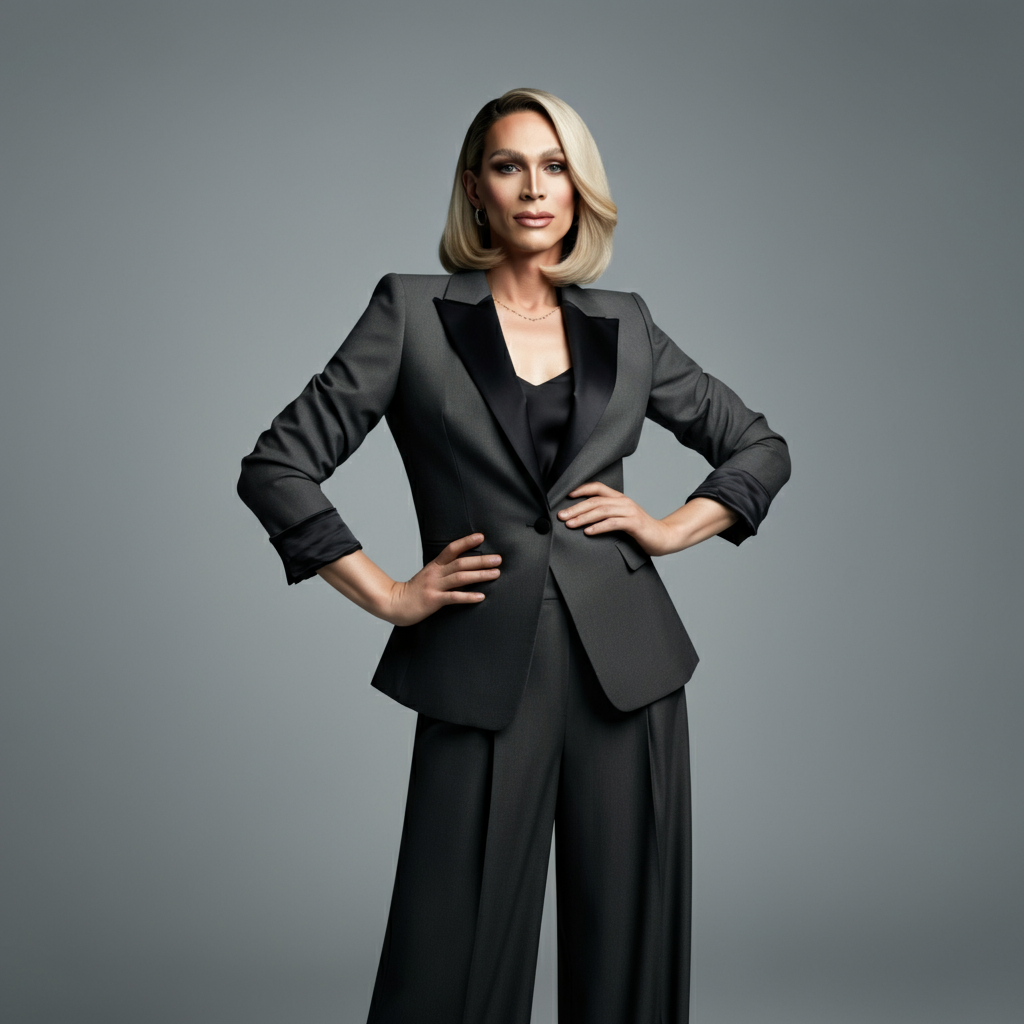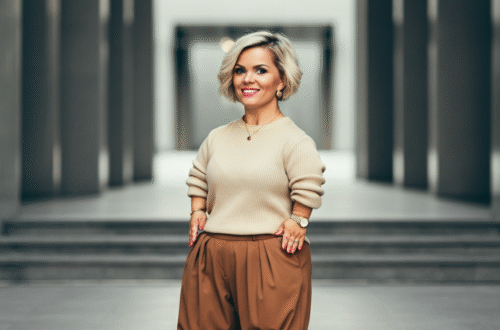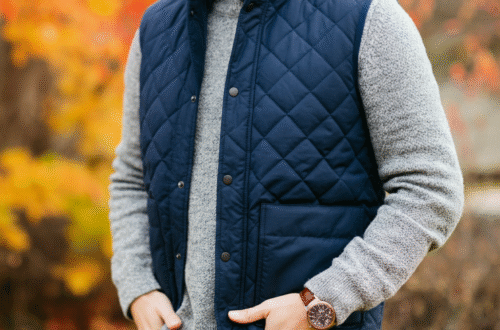The fashion industry has always been a space for change, reflecting and often leading shifts in our culture. Today, one of the most significant and inspiring movements is the growing visibility and success of transgender models. These professionals are not only bringing new faces to runways and campaigns but are also pushing the boundaries of beauty, identity, and representation. Their presence challenges traditional norms and celebrates the rich diversity of human experience. This guide explores the world of transgender models, from their history and impact to the practical steps for those aspiring to join their ranks. We will look at the opportunities, the challenges, and the incredible progress being made in creating a more inclusive fashion landscape for everyone.
Understanding the Role of Transgender Models
In the simplest terms, transgender models are professional models who are transgender. Their role is the same as any other model: to bring a designer’s vision to life, sell a product, or create a compelling image. However, their presence in the industry carries a deeper meaning. For years, fashion upheld very narrow standards of beauty. The inclusion of transgender models is a powerful statement that beauty is not one-size-fits-all. It’s about authenticity, individuality, and self-expression. By being visible, these models help break down stereotypes and foster greater understanding and acceptance. They are not just faces on a magazine cover; they are advocates and trailblazers, showing the world that talent and professionalism are what truly matter. Their work contributes to a more inclusive narrative in media and advertising, which has a positive ripple effect on society.
A Brief History of Breakthrough Moments
The journey of transgender models into the mainstream has been marked by several key moments. In the 1970s and 80s, pioneers like Tracey Norman worked for major brands, though her transgender identity was often not public knowledge at the time. Her story, revealed decades later, highlighted the early, often hidden, presence of trans individuals in high fashion. The 2010s marked a significant turning point. Models like Lea T became a muse for a major luxury fashion house, and Andreja Pejić walked for top designers in both men’s and women’s shows before publicly transitioning. These moments opened doors and started important conversations. The industry began to recognize the talent and appeal of transgender individuals, leading to more inclusive casting. More recently, models like Hunter Schafer and Indya Moore have moved from the runway to successful acting careers, further cementing their status as cultural icons and proving the immense impact of authentic representation.
The Current Landscape for Transgender Models in the US
Today, the landscape for transgender models in the United States is more promising than ever, though it varies by market. Major fashion hubs like New York, Los Angeles, and Miami are at the forefront of inclusive casting. New York Fashion Week regularly features transgender models on its runways for both established and emerging designers. In Los Angeles, the market is strong for commercial and e-commerce work, with brands seeking models who reflect their diverse customer base. Beauty campaigns have also become a significant space for representation, with transgender models fronting campaigns for global cosmetics companies. Beyond the major hubs, opportunities are growing in cities like Chicago, which has a solid commercial print market. Social media has also become a powerful platform, allowing models to build їх own brands and partner directly with companies, bypassing traditional agency routes. This digital presence is a key part of the modern modeling career.
Runway vs. Commercial Modeling
When considering a career, it’s helpful for aspiring transgender models to understand the differences between runway and commercial modeling. Runway modeling, or “haute couture,” is focused on high-fashion and editorial work. It typically has strict physical requirements for height and measurements, as models must fit into a designer’s sample-sized garments. The work is often centered around major fashion weeks and in high-fashion magazines. Commercial modeling, on the other hand, is much broader. It’s about selling a product or lifestyle to a general audience. This includes everything from e-commerce and catalog work to TV commercials and print ads for everyday brands. The physical requirements are more flexible, with a greater emphasis on relatability and a look that appeals to a wide demographic. While runway offers prestige, commercial modeling often provides more consistent and lucrative work.
Here is a simple comparison of these two paths:
|
Feature |
Runway Modeling |
Commercial Modeling |
|---|---|---|
|
Primary Goal |
Showcase high-fashion designs |
Sell products and services |
|
Physical Req. |
Strict height and measurements |
More flexible and diverse |
|
Key Markets |
New York, Paris, Milan |
New York, Los Angeles, Chicago |
|
Type of Work |
Fashion shows, editorials |
Print ads, e-commerce, TV |
|
Look |
Unique, edgy, high-fashion |
Relatable, accessible, friendly |
|
Pay |
Can be high, but less frequent |
Often more stable and consistent |
Navigating Agencies and Inclusive Casting
Finding the right representation is a crucial step for any model. Many major modeling agencies now have LGBTQ+ divisions or actively scout and represent transgender models. These agencies understand the unique aspects of the market and can connect models with clients पुलिस for diversity in their campaigns. When looking for an agency, it’s important to research their roster. Do they already represent other transgender models? Are they known for promoting diversity? An inclusive agency will be a true partner, advocating for their models and ensuring they are booked for jobs that respect their identity. The casting process itself has also evolved. Many casting calls now specifically request a diverse range of talent, including transgender and gender-nonconforming individuals. This shift toward inclusive casting means that opportunities are no longer limited to niche projects but are present across the fashion spectrum, from luxury brands to mass-market retailers.
Building a Professional Portfolio
A strong portfolio, or “book,” is a model’s most important marketing tool. For aspiring transgender models, this is नॉन-negotiable. A portfolio is a collection of high-quality photographs that showcase a model’s range, look, and potential. It should include a variety of shots:
- Headshots: Clear, well-lit photos of your face, one smiling and one more neutral.
- Full-length body shots: These show your proportions and physique. Simple, form-fitting clothing is best.
- Editorial or creative shots: These are more stylized photos that demonstrate your ability to convey a mood or character.
- Commercial shots: These photos should look like they belong in a catalog or advertisement, showcasing a more accessible and friendly look.
To build a book, models often do “test shoots” or “TFP” (Time for Prints) collaborations with photographers, stylists, and makeup artists who are also looking to build their own portfolios. This is a great way to get high-quality images without a large upfront cost. Your portfolio should also be available digitally, and you’ll need a comp card (composite card), which is like a model’s business card with your best photos and measurements, to leave behind at castings.
Practical Skills for Success
Beyond a great look and portfolio, successful transgender models need a set of practical skills. A strong runway walk is essential for fashion show castings. It should be confident, powerful, and adaptable to different styles of clothing and music. Practicing in different types of shoes is critical. Posing is another key skill. A model must know their angles and be able to move fluidly in front of the camera, offering a variety of poses without needing constant direction. Understanding lighting and how it affects your features is also beneficial. Professionalism is paramount. This means being on time, having a positive attitude, and being able to work collaboratively with a large team of photographers, stylists, and clients. The ability to take direction and adapt to feedback is what separates an amateur from a professional. These skills are honed through practice, test shoots, and real-world experience on set.
Overcoming Industry Challenges
While the industry is becoming more inclusive, transgender models can still face unique challenges. Discrimination, though illegal in many places, can still occur in casting. Misgendering on set can be emotionally draining, making it important for models and their agents to establish clear expectations with clients beforehand. Travel can also present difficulties, as documentation like passports and IDs may not align with a model’s gender identity, creating potential issues at borders. Access to safe and inclusive healthcare while traveling for work is another consideration. However, the industry is making progress. Organizations like SAG-AFTRA offer protections for union members, and many agencies now have policies in place to support their trans talent. Finding a supportive community and being connected to resources is key to navigating these challenges. Advocacy groups and online forums can provide valuable advice and solidarity.
The Power of Social Media and Personal Branding
In today’s fashion world, a model’s influence extends far beyond the runway. Social media platforms have empowered transgender models to build їх own personal brands, connect directly with an audience, and advocate for causes they care about. By creating content that showcases their personality, style, and experiences, models can cultivate a loyal following. This audience is attractive to brands looking for authentic connections, leading to influencer marketing opportunities and brand partnerships. A strong social media presence can be a powerful asset, sometimes even leading to agency representation. It allows a model to control their own narrative and showcase their value beyond traditional modeling metrics. For many transgender models, their platform becomes a space for social impact, where they can educate their followers, promote inclusivity, and inspire others. This blend of modeling and advocacy is a defining feature of the modern successful model.
Creating Authentic Content
To build a personal brand, it’s not enough to just post beautiful photos. Aspiring transgender models should focus on creating authentic content that tells a story. This could mean sharing behind-the-scenes glimpses of photo shoots, talking about their journey in the fashion industry, or sharing their personal style and beauty tips. It’s about being genuine and relatable. Brands are increasingly interested in brand partnerships with models who have an engaged community, not just a high follower count. This means creating content that sparks conversation and builds a real connection. Collaborating with other creators, using relevant hashtags, and engaging with comments are all part of building an effective online presence. It’s a way to demonstrate professionalism and marketability outside of the traditional agency-client structure, opening up new streams of income and opportunity.
Resources and Building a Support System
Navigating a career as a transgender model is easier with a strong support system. This includes professional, personal, and community support. Professionally, a good agent and a lawyer familiar with modeling contracts are invaluable. They can advocate for fair rates, proper usage rights, and safe working conditions. Personally, having friends and family who support your career目标 is crucial for mental and emotional well-being. The modeling industry can be demanding, and having a solid foundation લોકો to fall back on makes a huge difference. Community resources are also vital. There are numerous non-profit organizations and grassroots groups dedicated to supporting transgender and gender-nonconforming individuals. These organizations can offer everything from legal advice and mental health resources to community events and networking opportunities. While it is important to do your own research, you can find a wealth of information at your local LGBTQ+ center or through online searches for trans advocacy groups. For more insights into the fashion world, you can also explore the truefashionstory.com Blog.
Key Takeaways
- Representation Matters: The growing visibility of transgender models is helping to create a more inclusive and authentic fashion industry.
- Professionalism is Key: Success requires a strong portfolio, practical skills like a great walk and posing ability, and a professional attitude.
- Know Your Market: Understand the differences between runway and commercial modeling to find the path that best suits your look and career goals.
- Build Your Brand: Use social media to create a personal brand, connect with an audience, and open doors to new opportunities.
- Find Your Support: Navigating industry challenges is easier with a network of supportive agents, friends, and community resources.
Frequently Asked Questions (FAQ)
1. Do I need to be signed to an agency to be a transgender model?
No, you don’t need to be signed to an agency to start. Many successful models begin as freelancers, building their portfolios through test shoots and booking jobs through social media and casting platforms before seeking representation.
2. What should I put for my measurements on a comp card?
Your comp card should include your height, bust, waist, and hip measurements. It’s important to be accurate and professional. If you are gender-nonconforming, you can list the measurements that you feel are most relevant to the type of work you are seeking.
3. How can I find photographers for test shoots?
Social media, especially Instagram, is a great place to find photographers, stylists, and makeup artists who are also looking to build their portfolios. Look for local creatives and reach out with a professional message proposing a TFP (Time for Prints) collaboration.
4. Are there specific agencies for transgender models?
Some agencies have become known for their diverse rosters and have dedicated divisions for LGBTQ+ talent. Researching agencies in major markets like New York and Los Angeles is a good start to find ones that are actively scouting and supporting transgender models.
5. What is the biggest challenge for transgender models today?
While opportunities are growing, challenges like misgendering, discrimination, and issues with legal documentation for travel can still exist. Having a strong agent and a supportive community is essential for navigating these potential obstacles.





